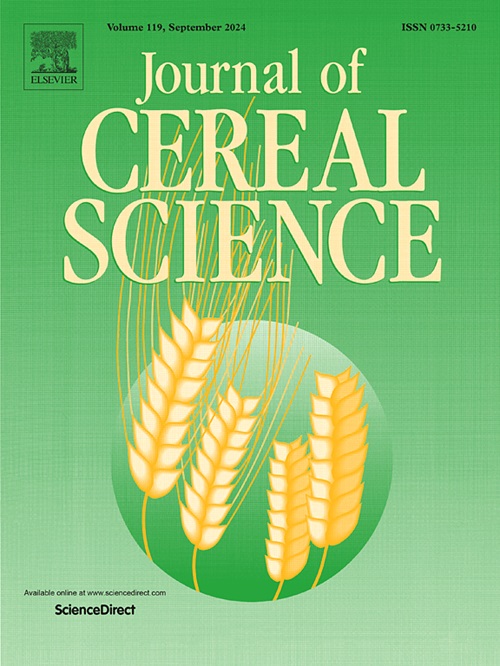Analysis of rancidity characteristics of different foxtail millet flour during accelerated aging storage
IF 3.7
2区 农林科学
Q2 FOOD SCIENCE & TECHNOLOGY
引用次数: 0
Abstract
Although foxtail millet is popular for its rich nutritional components and climate-resilient advantages, the influence of rancidity on the changes in the quality of foxtail millet flour remains unclear. Herein, an accelerated aging storage experiment was conducted in this study to analyze the physiochemical parameters of lipid hydrolysis and lipid oxidation, and the change in surface morphology and flavor of three foxtail millet flour varieties. Results showed that the fatty acid value of foxtail millet flour significantly increased during storage. Lipid peroxides and carbonyl compounds were formed by lipid oxidation, which altered the flavor of foxtail millet flour. Among these, hexanal, benzaldehyde, Z-2-heptenal, and heterocyclic compounds were the main volatile compounds that contributed to the rancid flavor. Physicochemical indexes including fatty acid value, activity of catalase and lipoxygenase and flavor profile including volatile compounds were the main factors contributing to differences in rancidity characteristics in foxtail millet flour. This study indicated that the fat rancidity is the main reason for the quality deterioration of foxtail millet flour during storage, and JG-49 showed significantly different rancidity characteristics compared with other millet flour varieties, providing important references for extending the shelf life and developing other new products of millet flour.
不同谷子粉在加速老化贮藏过程中的酸败特性分析
虽然谷子以其丰富的营养成分和适应气候的优势而广受欢迎,但酸败对谷子粉品质变化的影响尚不清楚。本研究通过加速老化贮藏试验,分析了3个谷子粉品种的脂质水解和脂质氧化的理化参数,以及表面形态和风味的变化。结果表明,在贮藏过程中,谷子粉的脂肪酸值显著升高。脂质氧化形成脂质过氧化物和羰基化合物,改变了谷子粉的风味。其中,己醛、苯甲醛、z -2-庚醛和杂环化合物是产生酸味的主要挥发性化合物。脂肪酸值、过氧化氢酶和脂氧合酶活性等理化指标和挥发性成分等风味特征是影响谷子粉酸败特性差异的主要因素。本研究表明,脂肪酸败是造成谷子粉在贮藏过程中品质劣化的主要原因,JG-49与其他谷子粉品种相比,其酸败特性有显著差异,为延长谷子粉的保质期和开发其他谷子粉新产品提供重要参考。
本文章由计算机程序翻译,如有差异,请以英文原文为准。
求助全文
约1分钟内获得全文
求助全文
来源期刊

Journal of Cereal Science
工程技术-食品科技
CiteScore
7.80
自引率
2.60%
发文量
163
审稿时长
38 days
期刊介绍:
The Journal of Cereal Science was established in 1983 to provide an International forum for the publication of original research papers of high standing covering all aspects of cereal science related to the functional and nutritional quality of cereal grains (true cereals - members of the Poaceae family and starchy pseudocereals - members of the Amaranthaceae, Chenopodiaceae and Polygonaceae families) and their products, in relation to the cereals used. The journal also publishes concise and critical review articles appraising the status and future directions of specific areas of cereal science and short communications that present news of important advances in research. The journal aims at topicality and at providing comprehensive coverage of progress in the field.
 求助内容:
求助内容: 应助结果提醒方式:
应助结果提醒方式:


